The iFi Aurora is an audiophile lifestyle system. Funny enough, contrary to popular belief, this is not a new concept, in fact, it goes back to some of the very first Victrolas. And like its many predecessors, the Aurora acknowledges one inescapable fact; a HiFi system is also a piece of furniture, and as such, it must blend in and compliment your décor. What is new is all of the technology that goes into the Aurora to make it an exceptional sounding as well as exceptional looking piece of audiophile HiFi gear and make its operation as easy yet versatile as the needs of its user, identifying it as a true product for the modern age.

The iFi Aurora:
So let’s tick off the bullet points:
- PureEmotion® is iFi’s proprietary amp technology. It is a hybrid circuit design that comprises several key stages.
“The first of these – the preamp stage – incorporates a Russian 6N3P valve (visible through a window next to the OLED display). This takes the analogue audio signal delivered by the Aurora’s DAC circuitry – based around a chip from ESS Technology’s renowned 32-bit Sabre DAC family – and adds gain in preparation for further amplification, imbuing the sound with pure tonality, open imaging, and natural fluidity.
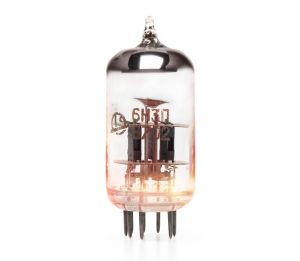
The Russian 6N3P is from the 2C51 premium tube/valve family. Each half of the tube is used as the pre-amplifier stage for the left & right channels.
The 6N3P brings the beauty, life-like sound of tubes into play – unusual for a one-box music system.”

- Soundspace® – the drive unit array with a proprietary matrix, adjusts the level of output from specific drivers at certain frequencies. It gives the Aurora an immersive, room-filling performance, enabling the soundstage to extend beyond the single cabinet.

- TrueBass® – the depth and quality of bass supplied by all-in-one lifestyle systems often leaves a lot to be desired.
“The TrueBass® system, incorporating the two downward-firing 8′ bass radiators, delivers genuine bass with realistic depth and definition. Dual-level depth control means you can adjust the bass response according to taste – down to a deeply impressive 27Hz.”
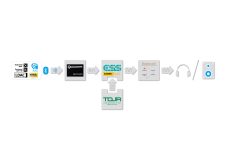
- The iFi Bluetooth® implementation does not use a standard SOC (System On a Chip) as seen elsewhere. It uses a combination of quality elements to extract the most from each stage. The Qualcomm chip routes the raw, digital Bluetooth® signal to a specialized Sabre DAC chip to convert the signal from digital to analog – any jitter is eliminated using iFi’s GMT Femto-precision clock system to deliver Bluetooth® that is a cut above.
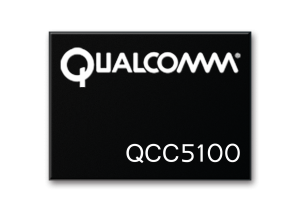
- The very newest Qualcomm 5100 series running Bluetooth5.0. This is an extremely low power, premium-tier system on a chip specifically designed for use in audio devices. This processes the data and delivers high-quality wireless streaming over Bluetooth®.
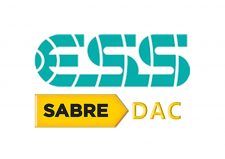
- Discrete ESS Sabre Hyperstream DAC chipset with time-domain jitter eliminator, discrete oscillator, and 112dB dynamic range.

- AMR’s Global Master Timing (GMT)/ Memory Buffer System represents a total ‘out of the box’ systematic digital solution that solves the digital SPDIF jitter once and for all.

- ART (Automatic Room Tailoring) is a ‘room correction’ system developed entirely in-house.
“At the press of a button, six sensors measure the distance to the surrounding walls using ultrasonic sound. Then, a 32-bit ARM Cortex microprocessor adjusts the output from the speaker array to precisely tailor the musical performance.
All the adjustments are made strictly in the analogue domain, without relying on DSP or feedback in the manner of many other room correction systems.”

- With LINKPLAY™ WiFi/network playback, built-in Spotify and Tidal, and wide protocol support for 32-Bit/192kHz. Aurora can be also used without a computer to stream audio directly.
The look of the Aurora was imagined by French designer, Julien Haziza, who drew inspiration from Japanese industrial designers and architecture; specifically Shigeru Ban, Tadao Ando, and the Omotesandō and Harajuku districts in Tokyo. “Clad in bamboo and elevated by a distinctive aluminium frame”, the Aurora’s design “mimics the grand scale of Japanese architecture with crisp, clean lines intertwined with a hint of vintage.”
The compact back panel contains all the connectivity one would desire in a self-contained entertainment system: one set of RCA analog inputs, a 3.5 TRS stereo analog input, one coax digital input, one optical digital input, an Ethernet connection, a USB Type-A connection for external hard drives or USB memory stick, a Micro SD card slot, a 12 volt DC input for use in a car or boat, and the standard AC connection (for this review I used a Cardas Iridium Power Cable). On top of that, you have Bluetooth with aptxHD, aptX, LDAC, HWA, and AAC codecs, and WiFi with Airplay and DLNA capabilities.
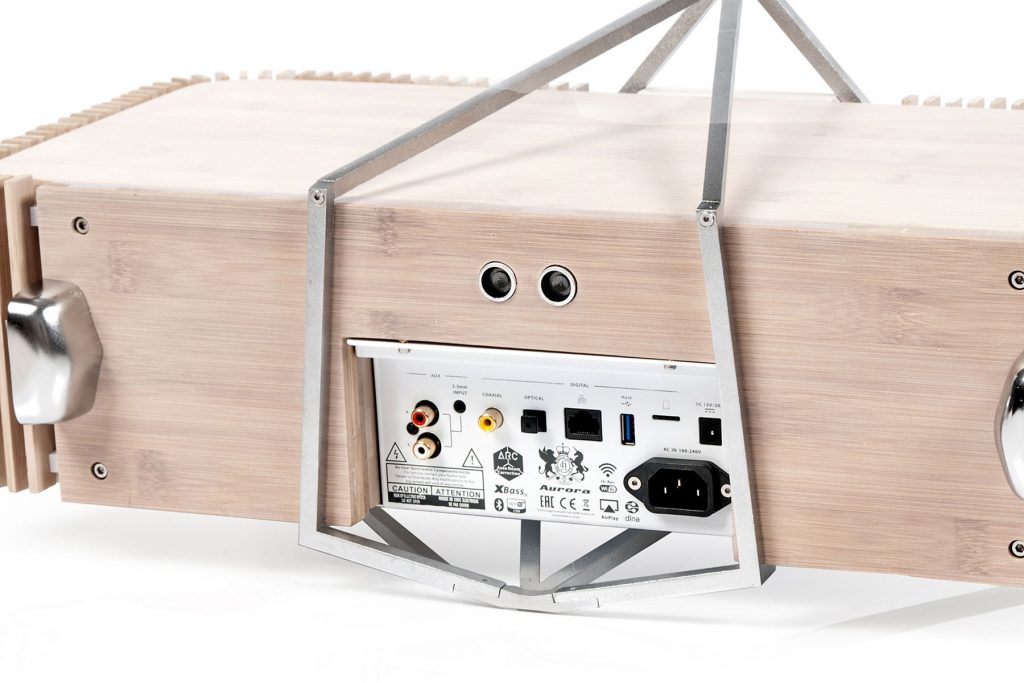
The front panel appears to be just lights, but those lights are actually touch-switches for Power, Bluetooth (as source but also for pairing), WiFi (as source and WPS), Coaxial input, Optical input, AUX, Brightness (OLED display and lights), Automatic Room Tailoring (ART), TrueBass, and Mute. As mentioned above, there is a small window showing the vacuum tube next to the OLED display and at the bottom, there is a series of lights to indicate volume.
The slim aluminum remote control offers Power, Mute, Volume, Previous/Next (Wifi only dependant on software player used), Play/Pause, Brightness, Input, ART, and TrueBass.

The primary control software is the MUZO Player app available for Android or iOS which gives you access to Streaming services like Qobuz, TIDAL, Napster, Spotify, iHeartRadio, and others as well as files on connected hard drives or Micro SD cards or files on the device onto which MUZO is installed. If you are using DLNA or Airplay control would be managed through your DLNA software or Airplay device.
Living with the iFi Aurora:
Upon opening the iFi Aurora, my first impression was the amazing smell of fresh-cut wood, that and it was much heavier than I expected. The Aurora is designed to sit on a sturdy tabletop, using the surface for sonic refraction, so I hastily put together a pedestal for it to sit on in my designated speaker area. Since I had MUZO already installed on my FiiO X7MKII for use with my iFi Pro iDSD DAC/Headphone Amplifier (along with a FAT32 formatted Micro SD card loaded with demo material which I also created for use with the iFi Pro iDSD) I used that for burn-in via Qobuz (I also tested the optical input using the FiiO X7MKII). Connecting the WiFi was simple enough, I just activated the WPS switch on my router then held the WiFi button on the Aurora for a few seconds, a voice prompt lets you know when WiFi is connected and the Aurora will show up in the MUZO scan.
If I have one complaint about iFi it is that their owner’s/set-up manuals are terse. They will give basic details as to what button or connection is for what, but very little in the way of “how-tos”, so sometimes experimentation or further research are required, though the operation of the Aurora is fairly intuitive.
Installing the aforementioned Micro SD card (since iFi requires FAT32 formatting, I don’t have an external hard drive to test with so a Micro SD card adaptor was used to test the USB input, with the resulting experience being identical to having the Micro SD card plugged in directly) I primarily used that and Qobuz for my listening test.

I began my serious listening tests with Qobuz selecting Puss N Boots’ new album “Sister” (24/96 kHz). The opening track “Jamola” is an austere instrumental featuring bass, drums, tambourine, and electric guitar, with a smattering of backing vocal. First thing I noticed was that the bass and kick drum had real impact, as if they were in the room. Then I became aware of the depth of the soundstage.

Something about the performance with Puss N Boots made me decide to pull up Pierre Moerlen’s Gong and “Downwind” from the album of the same title (16/44.1kHz). This is another instrumental dominated by tubular bells, marimba, and vibraphone, with a long dynamic percussion solo, against a backdrop of Mike Oldfield blazing lead guitar and Steve Winwood synthesizer playing to a bass guitar rhythm. I was completely blown away by the huge soundstage, completely immersed in the up-tempo chime-like percussion. It was hard to believe so much sound was generated by such a small device.

“Audiophile Mode” (ART off with the ability to toggle in Soundspace) offers a deep focused soundstage as exemplified by listening to “Can’t Find My Way Home” (Blind Faith – “Blind Faith” – 24/192kHz). Toggling in “SSpace” (Soundspace) expands the height and width of the soundstage with a few three-dimensional in-your-face elements thrown in for good measure. Turning on ART created an even more focused center with a further expanded soundstage, while giving meat and tightness to the bass (which is what room correction should do). Toggling through the three TrueBass settings offered subtle but palpable changes in the presence of bass. For my small sound room “T3” delivered the most pleasurable experience.
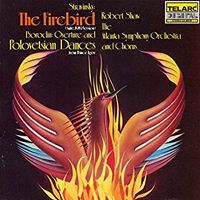
“The Firebird Suite” as performed by Robert Shaw and the Atlanta Symphony Orchestra and Chorus (“Stravinsky: The Firebird/Borodin: Music from Prince Igor” – 16/44.1kHz) provided a section A at the Bowl presentation (about 50 feet from the orchestra) and had a definitely outdoor feel as opposed to a concert hall. The dynamics were good and the image excellent and focused. The timbre and tonality of the instruments was basically neutral with nothing in particular being emphasized.
Conclusions on the iFi Aurora:
In keeping with the tradition of lifestyle systems dating back to the very first phonographs, the iFi Aurora is both beautiful and functional. The sound is quite amazing given its size and the fact that it is a one-box solution. It offers a neutral tonal balance with a large expansive soundstage which can present a very three-dimensional image making it ideal for private listening or background music at a party.
For those inclined towards soundbar use in their home theatre, it is a very attractive alternative able to provide the necessary larger than life presentation, though it doesn’t lend itself to the addition of a subwoofer.
If I have a complaint about the Aurora, it is the MUZO player app. I wish it was more polished (ala Roon), more intuitive, and more reliable. It should have all of the remote functions (the two remote solution – the actual remote and a smartphone or tablet – seems to me to be counter to the whole smart device concept) and display everything on the front panel (this made use a little difficult from my seating position as I could not see all of the printing on the front panel).
I should point out that this is a more refined piece, more adept at parlor music than recreating a night club. While there was plenty of volume, it is a more laid back, in the audience sound rather than stage edge, next to the monitor at a hip hop jam.
That being said, it’s not a boom-box and it’s not a rip-your-head-off 15” woofer loudspeaker system, it is an audiophile lifestyle system that will play most music well, fit into most decors, and provide years of entertainment from all of your music sources, that can stand toe to toe with any system in its price range.
Price: $1,399 USD
Manufacturer’s Website: https://ifi-audio.com
Specifications:
| Inputs |
| Hi-Res Bluetooth audio with aptxHD/aptX/LDAC/HWA/AAC |
|
Networked Audio with playback from NAS or server, Airplay,
streaming audio (Spotify/Apple Music/Amazon Music/Tidal hifi/Deezer etc.) and USB storage /SD Card 44.1kHz/16Bit – 192kHz/32Bit |
| Coaxial and optical S/P-DIF (Blu-ray Player, Games Console, smart TV etc) 44.1kHz/16Bit – 192kHz/24Bit |
| RCA & 3.5mm (for Alexa or analogue audio) |
| Speaker System |
| 4 x 4.5” (120mm) coated paper cone wideband driver |
| 2 x 1.1” (28mm) silk dome tweeter (8 kHz crossover) |
| 2 x 4.5” x 8” (120mm x 200mm) steel passive radiators |
| Frequency Response: 27Hz – 40kHz |
| Maximum SPL: 115dB / 1m |
| Amplifier |
| Hybrid with tube class A amplification. Power buffers operating at 1.411MHz/1.536MHz clock-locked. |
| Frequency Response | 15Hz to 150kHz |
| Maximum Power | 320VA (12v input for Marine/Car power supplies) |
| Distortion | < 0.05% |
| Dimensions | |
| Device |
59cm(w) x 27cm(h) x 28cm(d) — 15Kg 24″(w) x 11″(h) x 11″(d) — 33lb |
| Shipped |
69cm(w) x 50cm(h) x 40cm(d) — 20Kg 28″(w) x 20″(h) x 16″(d) – 44lb |

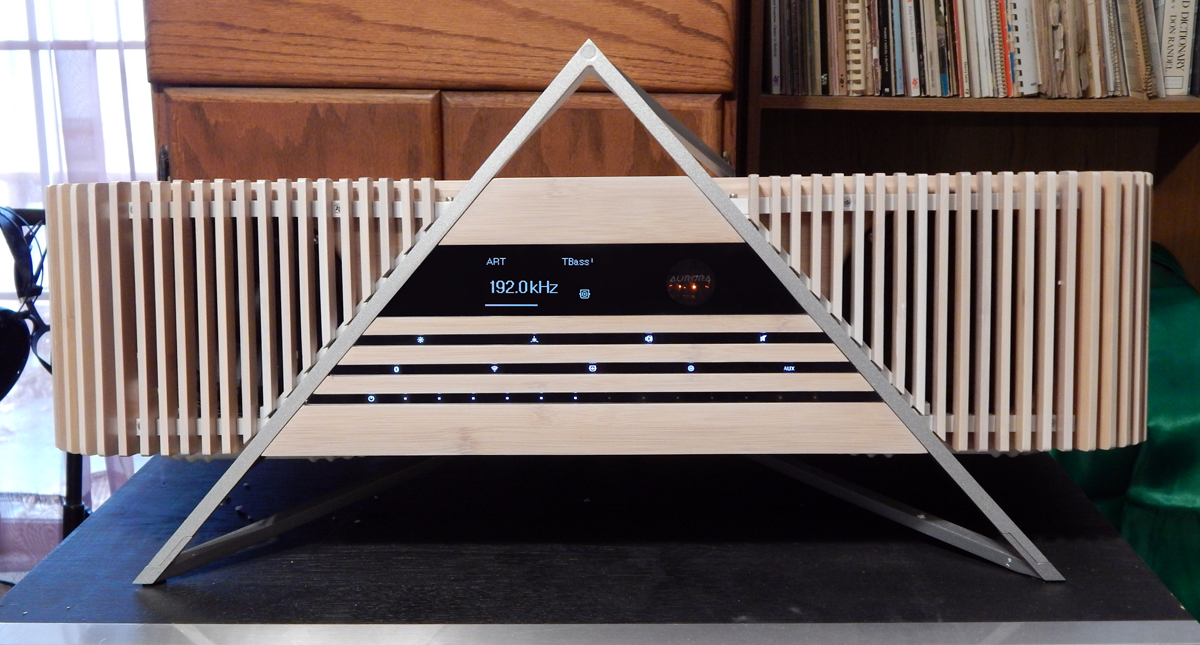






Leave a Reply
Want to join discussion?
Feel free to contribute!